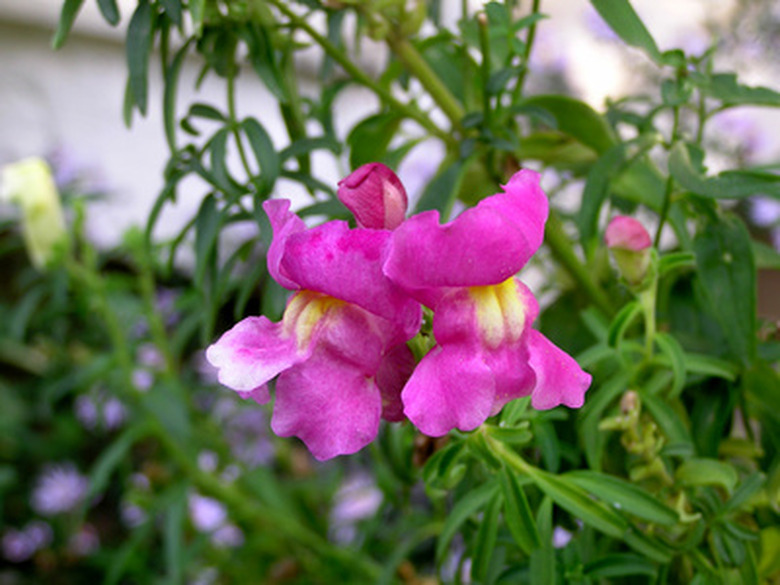The History Of Snapdragons
Snapdragons have been grown since the rise of the Roman Empire. The botanical name of the flower is Antirrhinum majus. In Greek, the word anti means "like," while rrhinum means "snout." The flower looks like the jaws and snout of a dragon. Children love snapdragons because squeezing the side of the flower makes the jaw open, then snap shut when released. The flowers were originally white or purple, but today come in all sorts of colors and sizes from 6 inches to 4 feet tall.
Snapdragons have been grown since the rise of the Roman Empire. The botanical name of the flower is Antirrhinum majus. In Greek, the word anti means "like," while rrhinum means "snout." The flower looks like the jaws and snout of a dragon. Children love snapdragons because squeezing the side of the flower makes the jaw open, then snap shut when released. The flowers were originally white or purple, but today come in all sorts of colors and sizes from 6 inches to 4 feet tall.
Origin
Snapdragons originated in the Mediterranean region and southern Europe, and have spread throughout the world. They were brought to America when colonists began to populate the states and planted them in gardens in almost every state. Snapdragons are easy to grow and were given the title of flower of the year in 1994 by the US National Garden Bureau.
- Snapdragons have been grown since the rise of the Roman Empire.
- Snapdragons are easy to grow and were given the title of flower of the year in 1994 by the US National Garden Bureau.
Early History
The Romans and Greeks thought snapdragons had the power to protect them from witchcraft. Descorides, the Greek physician wrote that protection would be given to the person that wore snapdragons around their neck. In the medieval period, snapdragons were thought to be the guardians of European castles and were planted near the gates. Women boiled snapdragons and applied the resulting infusion to their faces to keep them beautiful and restore youth.
Folklore
Early German society thought a bunch of snapdragons hung near a baby would keep the baby from being afraid of evil spirits. In Russia, snapdragons were believed to boost the body's energy and oil was made from the seeds and used like butter.
1700s and 1800s
Thomas Jefferson noted that he grew snapdragons in his garden in the late 1700s. In the Victorian era, a bouquet of snapdragons usually meant a proposal was coming soon. Hiding a snapdragon in the clothing was supposed to make a person fascinating and alluring. In the Victorian Language of Flowers, snapdragons either meant deception or graciousness.
- The Romans and Greeks thought snapdragons had the power to protect them from witchcraft.
- Early German society thought a bunch of snapdragons hung near a baby would keep the baby from being afraid of evil spirits.
1900s to Today
Snapdragons were considered one of the most popular cut flowers during the 1950s. Breeding started then and produced several popular varieties of the flower. The variety called 'Rocket' won six All American Silver Awards in Horticulture in the late 1960s. Another type of snapdragon was developed in the 1960s and it did not have the snout and jaw form. Instead it looked like butterfly wings and was called "Bright Butterflies." In the early 1970s yet another form was developed called "Madame Butterfly" and looked similar to the butterfly type but had extra petal in the middle and was called the double azalea form. Today we have the three types of snapdragon including the dragon jaws, butterflies and double azalea, all of which are still very popular in gardens all over the world.
- Snapdragons were considered one of the most popular cut flowers during the 1950s.
- In the early 1970s yet another form was developed called "Madame Butterfly" and looked similar to the butterfly type but had extra petal in the middle and was called the double azalea form.
